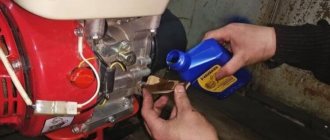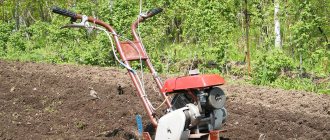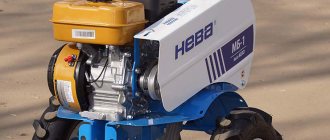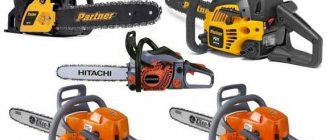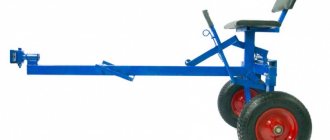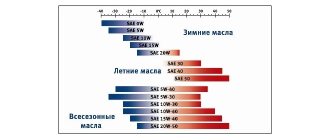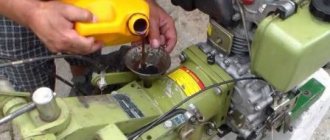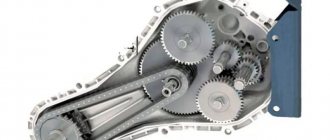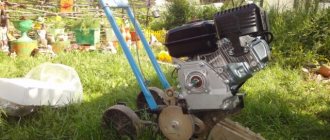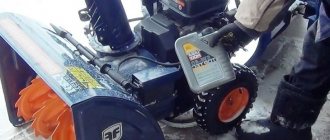The Lifan engine for a walk-behind tractor is a universal power unit designed for installation on small agricultural, gardening and construction equipment by the largest Chinese company Lifan, which since 1992 has specialized in the production of not only equipment, but also motorcycles, cars, buses, and scooters. High-performance motors are supplied both to the CIS countries and to the markets of Europe and Asia.
Lifan engines have a wide range of products. All of them are suitable for walk-behind tractors, cultivators, snow blowers, ATVs and other equipment.
When choosing an engine model, it is necessary to take into account the operating conditions, the brand of the walk-behind tractor on which the motor will be installed, the volumes and types of work performed in the areas, the type of power supply and engine power, the diameter and location of the output shaft.
Specifications
Gasoline engine models are excellent for walk-behind tractors - Lifan 168F, 168F-2, 177F and 2V77F.
Model 168F belongs to the group of engines with a maximum power of 6 hp. With. and is a 1-cylinder 4-stroke unit with forced cooling and a crankshaft positioned at an angle of 25°.
The technical characteristics of the engine for the walk-behind tractor are as follows:
- Cylinder volume - 163 cm³.
- Fuel tank volume - 3.6 liters.
- Cylinder diameter - 68 mm.
- The piston stroke is 45 mm.
- Shaft diameter - 19 mm.
- Power - 5.4 l. s. (3.4 kW).
- Rotation speed - 3600 rpm.
- Startup is manual.
- Overall dimensions - 312x365x334 mm.
- Weight - 15 kg.
The 168F-2 model is of particular interest to walk-behind tractor users, as it is a modification of the 168F motor, but has an increased service life and higher parameters, such as:
- power - 6.5 l. With.;
- cylinder volume - 196 cm³.
The cylinder bore and stroke are 68 and 54 mm, respectively.
Of the 9 hp engine models. With. highlight the Lifan 177F, which is a 1-cylinder 4-stroke gasoline engine with forced air cooling and a horizontal output shaft.
The main technical parameters of Lifan 177F are as follows:
- Power - 9 l. With. (5.7 kW).
- Cylinder volume - 270 cm³.
- Fuel tank volume - 6 l.
- The diameter per piston stroke is 77x58 mm.
- Rotation speed - 3600 rpm.
- Overall dimensions - 378x428x408 mm.
- Weight - 25 kg.
The Lifan 2V77F engine is a 2-piston V-shaped 4-stroke overhead valve gasoline engine with forced air cooling, a contactless transistor magneto ignition system and a mechanical speed controller. In terms of technical parameters, it is considered the best of all heavy class models. Its characteristics are as follows:
- Power - 17 liters. With. (12.5 kW).
- Cylinder volume - 614 cm³.
- Fuel tank volume - 27.5 l.
- Cylinder diameter - 77 mm.
- The piston stroke is 66 mm.
- Rotation speed - 3600 rpm.
- Starting system - electric, 12 V.
- Overall dimensions - 455x396x447 mm.
- Weight - 42 kg.
The service life of the professional engine is 3500 hours.
Fuel consumption
For engines 168F and 168F-2, fuel consumption is 394 g/kWh.
Models Lifan 177F and 2V77F can consume 374 g/kWh.
As a result, the estimated duration of work is 6-7 hours.
The manufacturer recommends using AI-92(95) gasoline as fuel.
Traction class
Light walk-behind tractors of traction class 0.1 are units up to 5 liters. With. They are purchased for plots of up to 20 acres.
Medium walk-behind tractors with power up to 9 hp. With. cultivate areas up to 1 hectare, and with heavy walk-behind tractors 9-17 liters. With. traction class 0.2 cultivate fields up to 4 hectares.
Lifan 168F and 168F-2 engines are suitable for Tselina, Neva, Salyut, Favorit, Agat, Cascade, Oka vehicles.
The Lifan 177F engine can also be used for installation on medium-sized vehicles.
The most powerful gasoline unit Lifan 2V78F-2 is designed for work in difficult conditions on mini tractors and heavy walk-behind tractors, such as Foreman, Sadko, Don, Profi, Plowman.
Motor cultivator device
The Mole motor-cultivator, as well as the Cayman, Patriot, Texas, Foreman, Crosser, Viking, Forza motor-blocks, is quite popular in the post-Soviet space, which is explained by the simplicity of its design and fairly good performance indicators.
There is absolutely nothing superfluous in the configuration of this walk-behind tractor, but its structure is designed in such a way that it is able to cope with basic agricultural work - digging up beds, cultivating the soil, etc.
In addition, the design of the main working units allows it to withstand quite long loads, ensuring stable operation for many years.
For more information about the Mole walk-behind tractor, watch the video:
the Mole walk-behind tractor itself consists of the following components:
- The frame structure, consisting of two half-frames, is attached to the gearbox with bolts.
- Tubular-type handles, as well as a special bracket for attaching additional attachments located at the rear of the structure.
- The main control elements are located on the handles - adjusting engine speed and clutch.
- The output shafts of the gearbox can be equipped with rototillers, as well as wheels, allowing the walk-behind tractor to be used together with a plow, or for transporting various loads.
- The frame structure houses the motor for the Mole walk-behind tractor, which is connected to the input shaft of the gearbox through a V-belt transmission.
- In addition, the design has built-in wheels that allow the unit to be moved freely. When starting to work with a walk-behind tractor, these wheels must be removed from the structure, or raised and fixed in the desired position.
As we can see, the device is quite simple and does not include unnecessary frills. In principle, everything you need for high-quality work on the ground is in the design of this unit and in the Sadko, Don, Khuter, Profi, Plowman, and Champion walk-behind tractors.
As for the factory engine of the Mole walk-behind tractor, its design is a 2-stroke engine with one cylinder and air cooling.
Its volume is about 60 cm3, with a power of 2.6 hp. and 6000 rpm. It is started using a regular cable, similar to the principle of starting a chainsaw.
It needs to be refilled with a special mixture consisting of gasoline and motor oil. These characteristics are quite modest, so many people want to change it to more powerful models.
Replacing the factory engine can be done independently , because the Mole design, as mentioned above, does not pose a certain complexity in its understanding. Most often they resort to replacing engines with 4-stroke versions, because they have higher performance characteristics than 2-stroke ones.
Of course, there are some modifications, such as the Mole walk-behind tractor with a 4-stroke Honda engine, but its cost will be significantly higher than that of the standard Mole. That’s why we are considering the “worst” option, when we have a walk-behind tractor with the most standard factory engine, with a power of no more than 3 hp.
Device
According to the engine instructions for the walk-behind tractor and walk-behind cultivator, the Lifan 4-stroke internal combustion engine has the following components and parts:
- Fuel tank with filters.
- Fuel tap.
- Crankshaft.
- Air filter.
- Starter.
- Spark plug.
- Air damper lever.
- Drain plug.
- Oil plug.
- Muffler.
- Throttle lever.
- Dipstick
- Engine switch.
- Working cylinder.
- Gas distribution system valves.
- Crankshaft bearing support.
The motor is equipped with a protective automatic oil level control system; in some models it has a built-in reduction gear to reduce the shaft rotation speed. The gas distribution system is equipped with intake and exhaust valves, manifolds, and a camshaft.
Motoblock device
The Mole walk-behind tractor is a frame structure divided into two half-frames. At the top there are tube-type handles and a bracket for mounting attachments located on the rear side. The controls are located on the handles: clutch and speed switch. Some models also have a reverse switch.
The device is equipped with four cutters, 2 external and internal, as well as a coulter. Additionally, a hiller for beds, a potato digger or plow, a pump for water supply, and a mower are installed.
A two-stage gear-type gearbox with a chain drive and an internal combustion engine, which are connected to each other by a V-belt transmission, are bolted to the supporting frame. Above them is the fuel tank.
The clutch of the minitractor is disengaged and is switched by a handle like on a moped. Engaging the clutch provides belt tension to transmit torque without slipping.
Mills for cultivating soil or wheels for moving loads or sharing with a plow are mounted on the output shafts of the gearbox. The cutters serve as the main working body and consist of a rotor with special knives. They rotate and cut, crush and mix the soil as they gradually move forward. The working depth will depend on the length of the opener used.
The milling cutter loosens the soil and mixes fertilizers more thoroughly than a plow. Shows good performance on heavy soils and virgin soil.
The Mole walk-behind tractor moves freely on built-in wheels. Before starting work, they are removed or raised, fixing them in the desired position. During the first 15 hours of operation, do not give full load. At this time, the parts are being run-in. With a “shock” rate of use immediately after purchase, the performance of the motor decreases.
Advantages
A walk-behind tractor with a Lifan engine has the following advantages:
- stability of work;
- high quality;
- reliability;
- low noise and vibration levels;
- small overall dimensions;
- the use of a cast iron sleeve to increase engine life;
- ease of operation and maintenance;
- large margin of safety;
- long term of service;
- affordable price.
All these qualities distinguish Lifan engines from other engines.
Running in a new engine
Engine running-in is a mandatory procedure that extends the service life of the mechanism. To break in the engine of a walk-behind tractor, you must follow the operating instructions for the product and use high-quality fuel and oil of recommended brands.
Run-in is performed as follows:
- Before starting the engine, you must check the oil level in the crankcase.
- Check and, if necessary, fill the transmission with oil.
- Fill the fuel tank with flammable material.
- Start the engine at low speed.
- Start working with the walk-behind tractor in a gentle mode, alternating gears. Till the soil in 2 steps to a depth of no more than 10 cm in 1 pass; cultivate in 2nd gear.
- After break-in, change the oil in the engine, transmission components, and gearbox of the walk-behind tractor, inspect the consumables, change the oil filters, and fill in with new fuel.
- The break-in procedure lasts about 8 hours.
After a competent running-in of the new motor, the walk-behind tractor is ready to work at maximum loads.
The device of the Mole cultivator
The configuration of the domestic unit contains practically no unnecessary parts, but the design of the cultivator is made in such a way that the owner can use it for a variety of economic purposes. Thanks to the reliability of the main components, the equipment is able to withstand long-term loads. The design of the unit consists of the following elements:
- The frame, which is connected from two half-frames, is attached to the gearbox housing using bolts;
- Tubular handle and bracket for operating attachments;
- Control levers;
- Pneumatic wheels that are mounted on the output shafts of the gearbox;
- 2-stroke single-cylinder engine with an air-cooling system attached to the frame - connected to the gear shaft via a V-belt drive.
Among all the elements, the engine deserves special attention - its volume is approximately 60 cm3, torque is 6000 rpm, and power is 2.6 liters. With. The engine runs on a mixture of motor oil and gasoline.
It is not difficult to guess that the low power of the standard engine is pushing farmers to replace it. This operation is quite simple to perform, but you will need to choose the right engine for the Mole cultivator. Below we will figure out which motor is suitable for installation on a domestic unit.
Engine Maintenance
To ensure high-quality operation of the Lifan motor for a walk-behind tractor, it is necessary to carry out periodic maintenance, which includes the following points:
- Check the oil level, top up with a new one.
- Cleaning and replacing the air filter.
Every 6 months you need to do the following:
- Cleaning the sump.
- Adjusting and replacing spark plugs.
- Spark arrester treatment.
The following procedures are carried out annually:
- Checking and adjusting the idle speed of the engine.
- Adjustment of optimal valve clearances.
- Complete oil change.
- Cleaning the fuel tank.
The fuel line is checked every 2 years.
Adjustment of valves
Valve adjustment is a necessary procedure for engine maintenance. According to the regulations, it is carried out once a year and consists of setting the optimal clearances of the intake and exhaust valves. Their permissible value for each motor model is presented in the technical data sheet of the unit. For standard walk-behind tractors they have the following values:
- for the intake valve - 0.10-0.15 mm;
- for the exhaust valve - 0.15-0.20 mm.
The gaps are adjusted using standard feeler gauges of 0.10 mm, 0.15 mm, 0.20 mm.
With the correct settings of the intake and exhaust valves, the engine will operate without noise, knocking or jerking.
Selecting and installing an engine on the Krot motor cultivator
Small-scale mechanization equipment is used on subsidiary farms, including the Krot motor-cultivator. The unit is successfully used for surface treatment and loosening of soil, weeding the space between ridges, hilling potatoes and transporting goods. It is characterized by ease of use and durability, agility and small dimensions, which is practical for transportation in a car trunk. However, some farmers strive to improve the unit in every way, for example, by installing a different electric motor.
Change of oil
Carrying out an oil change operation is an important procedure that affects many driving characteristics and improves the operation of the mechanism.
The frequency of the procedure depends on many factors:
- frequency of operation;
- technical condition of the motor;
- conditions of use;
- the quality of the oil itself.
Changing the oil is done as follows:
- Place the motor on a flat surface.
- Unscrew the oil pan dipstick and drain plug.
- Drain the oil.
- Install the drain plug and close it tightly.
- Fill the crankcase with oil and check its level with a dipstick. If the level is low, add material.
- Install the dipstick and tighten it tightly.
Do not dump used oil into the ground, but rather take it in a closed container to a local recycling point.
What kind of oil to pour into the engine
The manufacturer recommends using motor oil for a walk-behind tractor that meets GOST 10541-78 or API requirements: SF, SG, SH and SAE. Type of low-viscosity substance - mineral oil 10W30, 15W30.
Replacing the engine on a Mole motor cultivator - selection and installation
The Mole motor-cultivator has earned the trust of customers due to its reliability and simplicity of design.
However, many farmers are trying in every possible way to improve the unit, improve its technical characteristics and performance indicators. To do this, you can purchase and install a new engine for the Mole motor cultivator - it will make the unit more powerful, which will have a positive effect on its performance and capabilities.
How to install a Lifan engine on a walk-behind tractor
Each model and class of walk-behind tractor has its own engine. Let's look at these examples:
- The Ugra NMB-1N7 walk-behind tractor with a Lifan engine corresponds to version 168F-2A in terms of technical characteristics.
- Motoblock Salyut 100 - version 168F-2B.
- Ugra NMB-1N14 middle class - Lifan 177F engine with a power of 9 hp. With.
- Agat equipment with a Lifan engine can be equipped with models 168F-2 and Lifan 177F.
- An Oka with a Lifan 177F engine when combined with attachments will work better and more efficiently. Model 168F-2 with a power of 6.5 liters. With. also suitable for Oka MB-1D1M10S walk-behind tractor with Lifan engine
The engine can be installed on walk-behind tractors Ural, Oka, Neva according to the following algorithm of actions:
- Remove the protective casing from the old engine, belts, pulley, while unscrewing the bolts.
- Remove the air purification filter to disconnect the throttle cable.
- Remove the engine from the walk-behind tractor frame.
- Install the motor. If necessary, a transition platform is installed.
- A pulley is attached to the shaft, a belt is tightened for better operation of the track, adjusting the position of the motor.
- Secure the transition platform and the engine.
When installing the motor, the user must take care of the installation equipment.
Motoblock Cascade
When installing an imported Lifan engine on a domestic Cascade walk-behind tractor, the following additional parts are required:
- pulley;
- transition platform;
- adapter washer;
- throttle cable;
- crankshaft bolt;
- fasteners.
The mounting holes on the frame do not line up. For this purpose, a transition platform is purchased.
The cascade is equipped with a domestic engine DM-68 with a power of 6 hp. With. When replacing the engine with a Lifan, choose model 168F-2.
Motoblock Mole
When installing a Lifan engine on a Krot walk-behind tractor equipped with an old domestic engine, when replacing it is necessary to have installation kits, which include elements such as:
- pulley;
- adapter washer;
- throttle cable;
- crankshaft bolt.
If there was an imported motor on the walk-behind tractor, then only the Lifan engine itself with an output shaft diameter of 20 mm is sufficient for installation.
The best motors
Various types of motors are installed on the Mole walk-behind tractor, which increase the performance of the device and also allow it to be used more efficiently. Such units can be installed independently if the rules are followed, and before purchasing it is important to determine their power in order to choose the optimal engine for agricultural activities.
Honda GX270
The Japanese-made Honda GX270 engine can be easily installed on a walk-behind tractor to ensure ideal operation of the unit in extreme conditions. The volume of such a four-stroke power unit is 270 cubic centimeters and the power is 9 liters. With. This internal combustion engine has an air cooling system and is easy to repair if malfunctions occur. To increase the engine's service life, it is recommended to fill with AI-95 fuel.
As engine oil, you can use 10W40 or 10W30 fluids, which are recommended by the machine manufacturer. The power unit of the device has a sensor, thanks to which you can monitor the amount of oil in the crankcase and add it in time. Honda engines are the most optimal devices for installation on Mole walk-behind tractors.
Installing a Lifan engine on a Ural walk-behind tractor
The factory equipment of Ural walk-behind tractors assumes the presence of a domestic engine. In some cases, the power and performance of such a motor is not enough, so there is a need to remodel the equipment. Equipping a Ural walk-behind tractor with a Lifan engine with your own hands is quite simple, but before starting work you need to decide for what purpose the equipment is being created and select a suitable engine.
Certain engines are suitable for walk-behind tractors of different types and weights, so it is important that the parameters are combined. The heavier the walk-behind tractor itself, the more powerful the engine should be. Models such as Lifan 170F (7 hp), 168F-2 (6.5 hp) are suitable for the Urals. Their installation requires minimal modification.
The main feature that distinguishes Chinese engines from domestic ones is the direction of shaft rotation: for Lifan it is to the left, for factory Ural engines it is to the right. For this reason, the walk-behind tractor is configured to rotate the shaft to the right; to install a new engine, it is necessary to change the position of the chain gear so that the pulley is on the opposite side, which allows it to rotate in the other direction.
After the gearbox is on the other side, the engine is installed in the standard way - the engine itself is bolted, the belts are placed on the pulleys, and their position is adjusted.
Which engine to choose for the Mole walk-behind tractor?
Hello! There is a “mole” walk-behind tractor manufactured in 1991. The original engine was removed. I want to install a diesel engine. No more than 6 hp Which engine is better to buy, made in China or Slovenia?
Zames It’s easy for you to choose here since Slovenia does not produce walk-behind tractors or engines for them.
Riba4ok1 Produces engines. Brand "Sadko"
Zames wrote: I have a mole walk-behind tractor manufactured in 1991. The original engine was removed. I want to install a diesel engine. No more than 6 hp
Why buy a light motor cultivator, a diesel engine that can also power a mini tractor?
Any gasoline 4.5 hp. he has enough to spare.
umnyi I want to attach a homemade plow and a trailer to it) And I don’t like gasoline engines
The Ukrainian heavy MS walk-behind tractor has 4.5 hp for almost everything, and it weighs 217 kg as standard. Recalculate hp. per 1 kg Your right! The mass of the mole is simply not enough to power 4 diesel horses; perhaps the gearbox will simply grunt quickly. You will use 1/4 of the engine's power, running almost at idle (which, by the way, is not good) and that's it. Then take it with an electric starter
at least it won’t hurt later. There will be a mega-pumped Mole.
umnyi Then buy a 4.2 liter “sadko” diesel engine.
But still. Which is the best engine brand?
Zames If the difference in cost is ten bucks, what difference does it make what brand it is? They are all riveted at almost the same factories and they put on different stickers. If you were choosing between HondaSubaru and a bunch of Chinese clones, you could talk about something. Better look at the cost of consumables for the engine and their availability, otherwise if the air filter costs as much as a third of the engine.
Zames, you need to take the 168FB engine, 6.5 hp. Because it is the most common, spare parts are cheap and are always available (just in case), and the filters for it cost pennies. Take one with a 20mm shaft (and the bolt at the end of the crankshaft will be a regular M8, and not an exotic one with an inch thread), and also make sure that the air filter has an oil bath (for conditions of increased dustiness). By brand - WEIMA is the best (but also more expensive) - it is a real manufacturing plant, and not a sticker brand. They have better quality parts, the crankshaft and flywheel are balanced, and there is minimal vibration. They have a new line of engines - with a larger gas tank, a round “cyclone” air filter.
Reviews of Lifan engines
Vladislav, 37 years old, Rostov region
I installed the Lifan engine on the Cascade walk-behind tractor. It works for a long time, no failures are observed. I installed it myself and bought an installation kit. The price is affordable, the quality is excellent.
Igor Petrovich, 56 years old, Irkutsk region
The Chinese are simply superb. It consumes little fuel and works efficiently. My Foreman took a powerful 15 hp Lifan petrol engine. With. Feels powerful. Works great. Now I am confident in the high quality of Lifan.
